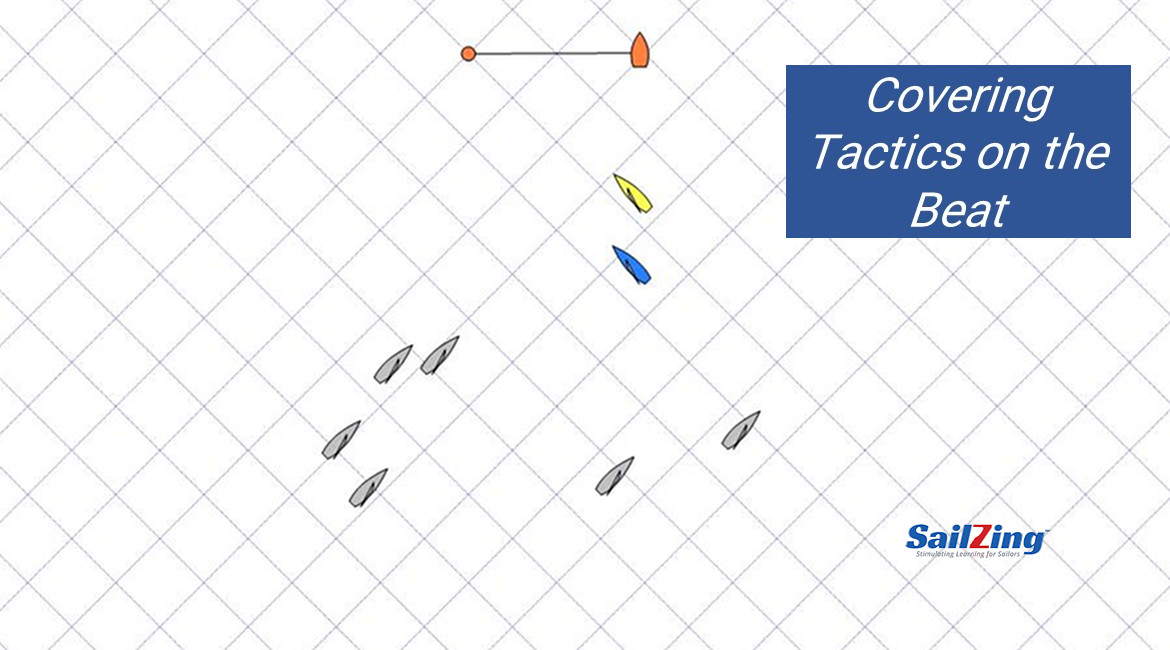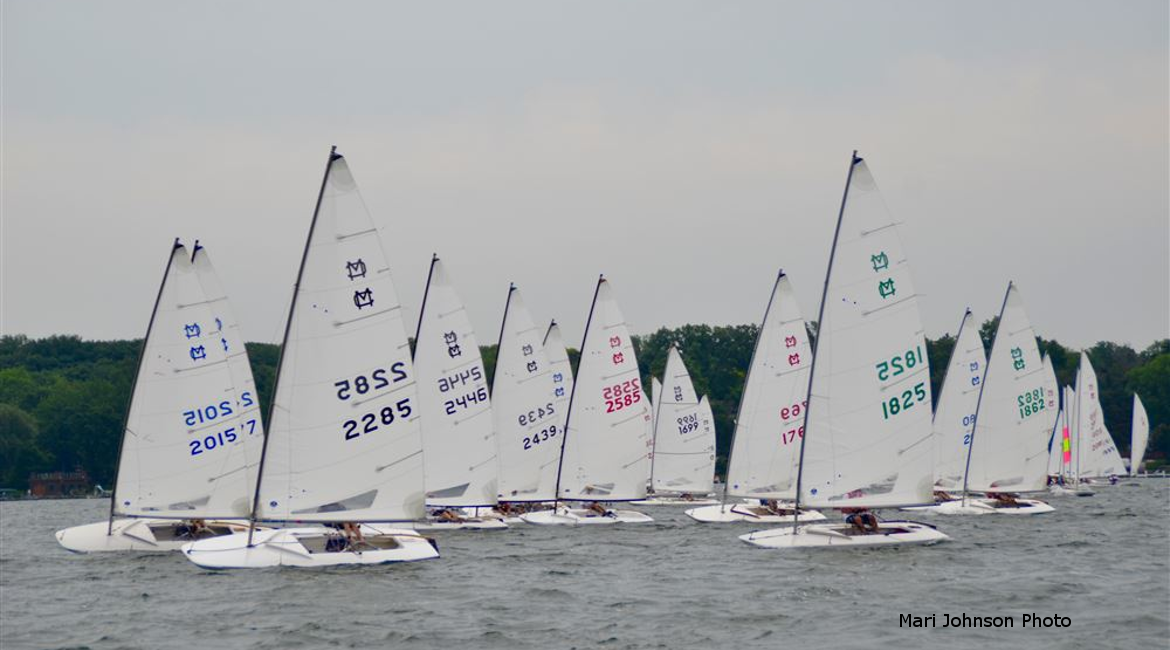To continue our series on keeping your lead, we turn to covering tactics on the beat. We reviewed several books and online articles and found two helpful summaries: How to Cover Upwind, by Dave Dellenbaugh (in Sailing Breezes) and Chapter 52 (Tactical Control) of Advanced Racing Tactics, by Stuart Walker.
Covering Tactics on the Beat: Overview
Dellenbaugh’s article gives the best overview of covering, with the following key points:
When to Cover
- Covering is most useful when:
- The fleet is spread out and you can focus on one or a few boats behind you
- You have to beat one boat
- Most of the fleet behind you is going one way
- You’re not sure about the wind
- Covering pitfalls:
- In shifty conditions or when big lulls are present, you may lose if you simply react to the other boat’s moves
- You may be too far away to be in the same wind
- When the wind shifts, boats to windward lose, even if there is no lateral separation (watch for a future post on this surprising fact)
- Competitors become annoyed when you cover early in the race, or frequently, or indiscriminately.
- In shifty conditions or when big lulls are present, you may lose if you simply react to the other boat’s moves
Basic Covering Techniques
- Loose cover – stay in touch with the other boat(s) without trying to slow them or force them to tack
- Use this to cover one or more boats, especially if they are going the way you want them to.
- Tight cover – place other boat(s) in your wind shadow or backwind zone to slow them or force them to tack
- Use this when one boat is close and you want to slow her or send her in a specific direction
Positioning for Covering or Control
Walker’s chapter on tactical control discusses seven positioning possibilities to help you cover or control other boats on the beat, shown in the drawings below. For each one, ask yourself the following:
- Who is in control, and is this a tight control (forces the other boat(s) to react) or a loose control?
- When would this positioning be useful?
- What are the cautions for the boat in control?
- What are the options for the boat that is being controlled?
Click on the title link below each picture for some answers. Please add your comments to the discussion.
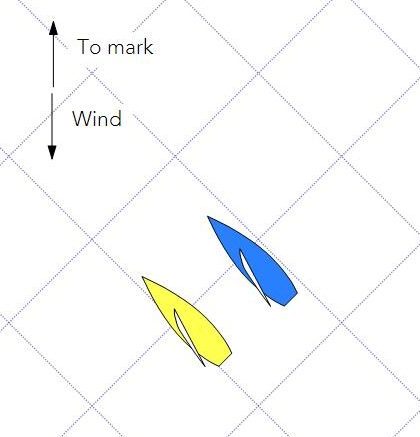
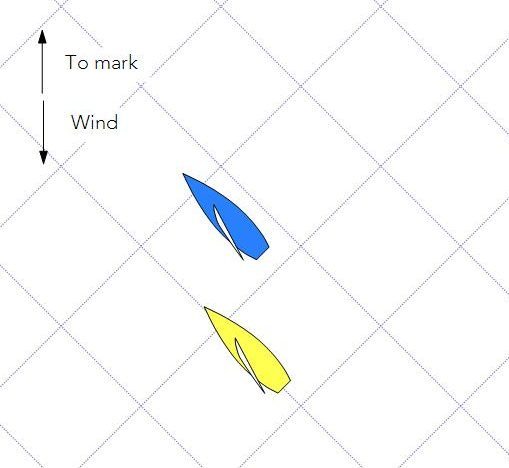
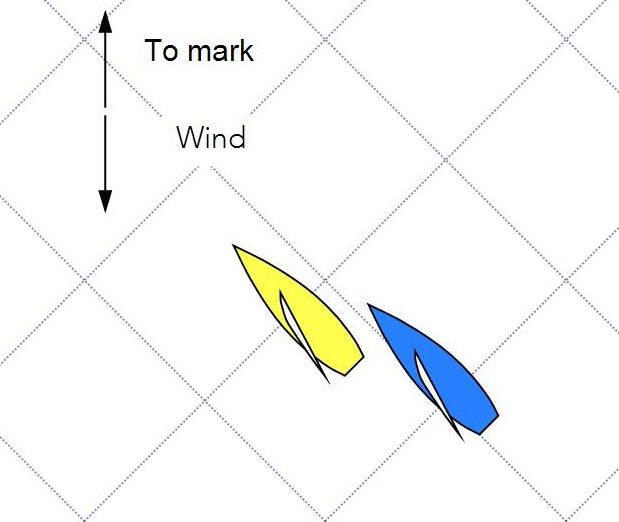
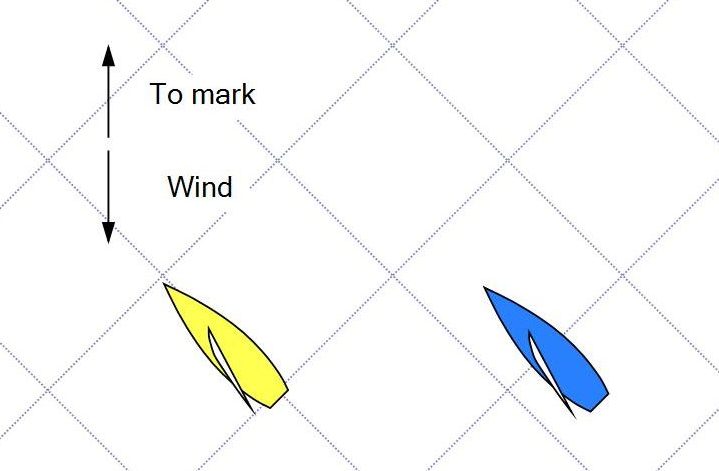
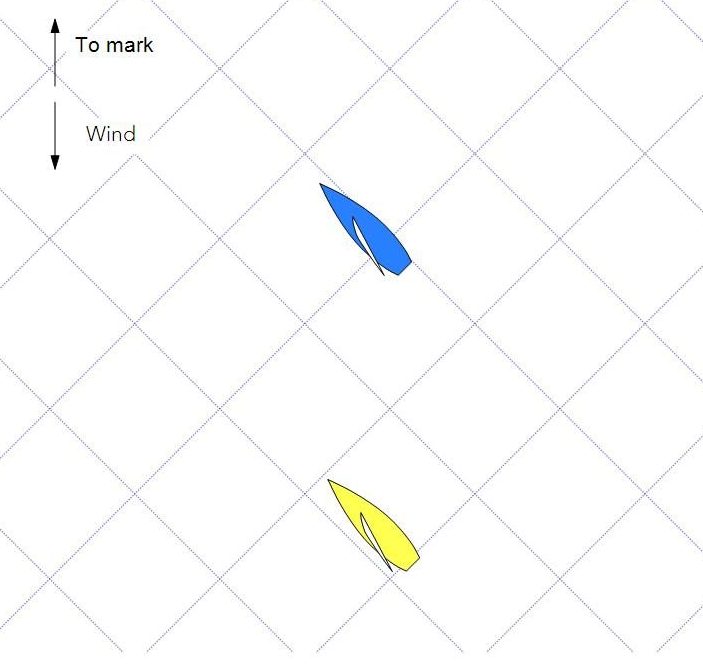
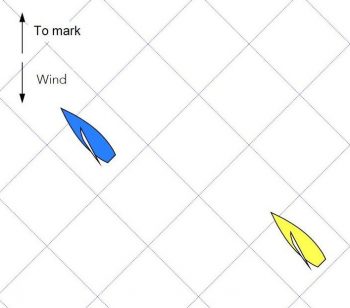
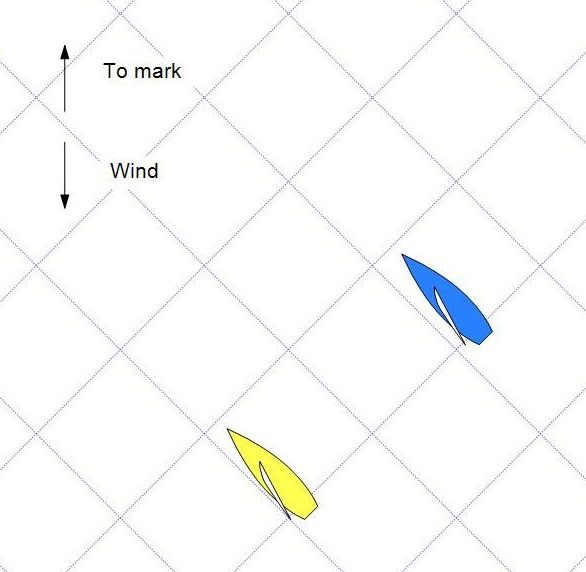
Next in the Series
In Part 3 of this series, we’ll cover the last part of the beat and the finish. Stay tuned!
Keeping Your Lead, Part 1: Covering Tactics at the Leeward Mark
Upwind Strategy and Tactics – Sail in Clear Air

